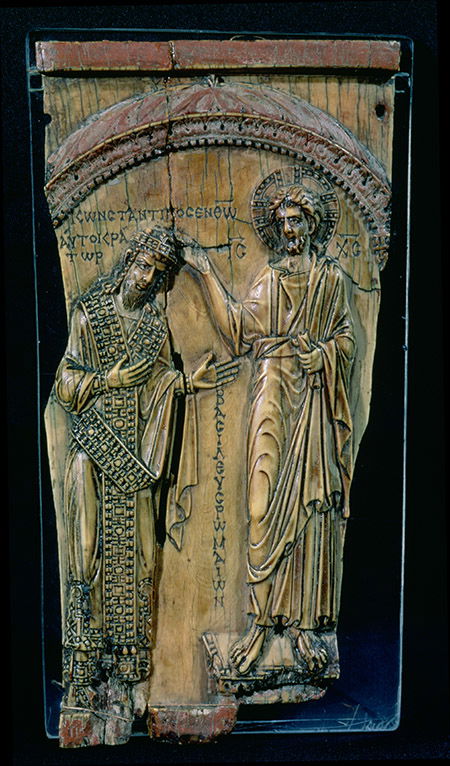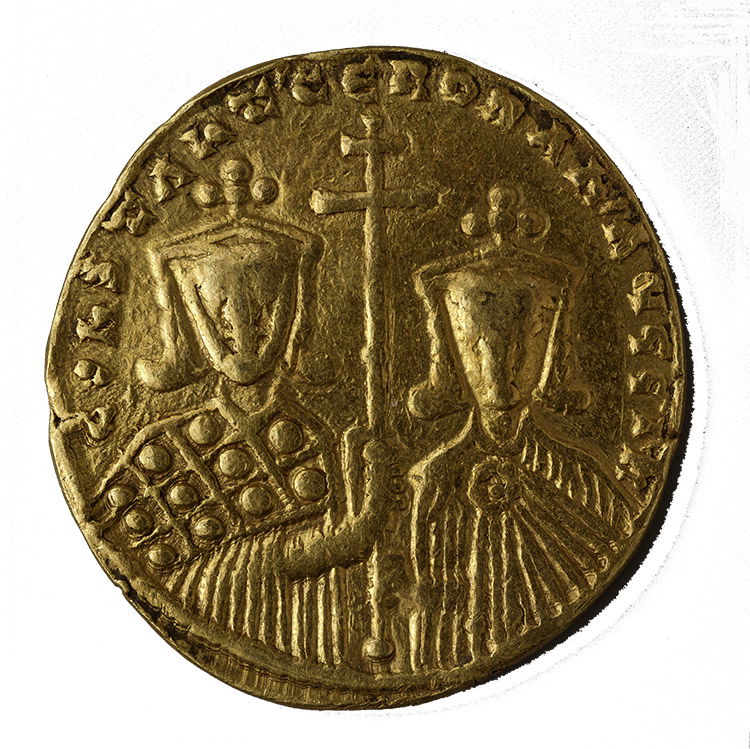A Blueprint for Byzantine Power
An embattled emperor offered guidance to his successors in the shape of a ‘mirror for princes’.

On 25 March 919 the Byzantine fleet sailed into the port of Constantinople. As the admiral of the Empire’s navy, Romanos Lekapenos was invited to the city as protector of its young ruler, Constantine VII Porphyrogenitus (‘born in the purple’). The admiral’s thinking was clear on how to resolve the current political crisis in the capital: he planned to seize the imperial throne from Constantine and the Macedonian dynasty. Once in the palace, he swiftly captured the levers of the Byzantine state. He had himself crowned emperor by Constantine and the Patriarch and subsequently elevated his own son to junior emperor status. Constantine, the rightful heir, was left physically unharmed in a relatively bloodless transition of political power.
Romanos’ daughter, Helena, was married to the young Constantine in 919, further evidence of the usurper’s intent to topple the Macedonians. Constantine could do little but submit to his father-in-law’s demands as Romanos consolidated his power. Seemingly resolved to his own fate or, more likely, as a result of his introverted temperament, Constantine had forsaken any active resistance to regain his throne. Instead, he devoted considerable time and energy to pursuing intellectual and artistic endeavours, including efforts to improve the ways in which the Byzantine state was ruled, perhaps as a response to the circumstances in which he found himself.
Constantine was an important figure in 10th-century Byzantine intellectual life. Bolstered with the knowledge stored in monastic and imperial libraries, he was able to organise and publish a number of scholarly texts. Through his own writings and his power as a royal sponsor, Constantine’s work covered a broad set of topics that spanned complex ceremonial procedures, imperial biography, military strategy, diplomacy and even agriculture. A particularly significant text to which he contributed is the De Administrando Imperio (DAI), which was developed between 948 and 952. Although the archetype of the DAI is lost, four manuscripts have survived. The DAI’s original title, if it had one, is unknown. In 1611, John Meursius, the manuscript’s first publisher, stamped its text with the title by which it is still known today.
To compile the DAI, Constantine oversaw a team of scholars and writers who gathered and documented information of keen interest to Byzantine rulers. In the DAI’s introduction, Constantine himself states the text’s goal: his son and eventual successor to the throne, Romanos II, was ‘to be instructed in what it behooves thee before all else to know, and lay hold skillfully upon the helm of rule’.
The DAI is a loose compilation of historical information, which includes the foundation myths of various Balkan nations, while ostensibly offering diplomatic advice for future Byzantine rulers: an example of the ‘mirror for princes’ genre. With a long tradition in Byzantine political writing, a ‘mirror for princes’ provided medieval rulers with a set of princely and divine virtues by which they should live and rule.
The DAI embodies the imperial ideology, espousing the role of an emperor that was characterised by Byzantine thinking prevalent in the empire’s middle period (843-1204). In it, the Byzantine emperor is the ultimate caretaker, ‘bound to take thought for the safety of all, and to steer and to guide the laden ship of the world’. This reference to the ‘ship of the world’ is the Byzantine state. It was the emperor’s mission to rule over the oikoumene, or ‘civilised world’, as God had entrusted the empire to the Romans under Constantinople.
The Byzantines were the new Chosen People and the Empire was eulogised in the DAI with biblical imagery: ‘Come hither and behold a land flowing with milk and honey.’ Yet it is the idea of order (taxis) that characterised the Byzantine spirit, calling essentially for a harmonious hierarchy of society and its institutions, framing Byzantine society as a reflection of heaven. In another of Constantine VII’s works, Book of Ceremonies, this divine order is described as a beautiful physical form: ‘For just as when a body is not harmoniously fashioned but has its limbs set in a contorted and ill coordinated way, one would describe this as disorder, so too when the imperial administration is not led and governed by order … so that the reins of power will be managed with order and beauty.’ States that did not conform to this strict taxis were looked on as ‘barbaric’, demonstrating a ‘disorderly’ state of affairs that the Byzantines abhorred.
Constantine’s intellectual work helped to revitalise the empire’s foreign relations in the 10th century and beyond. As the new Chosen People and legitimate heirs of Constantine the Great’s Roman Empire, the Byzantines sought to project power in former Roman territories with renewed energy and assertiveness. Following Constantine’s return to the throne and his death in 959, the three emperors who followed him were able military leaders, who fielded armies and went on to incorporate large swathes of territory into the Empire.

By 1025, Byzantium had reached its zenith, in influence, power and territory. These achievements might not have been undertaken – let alone attained – without the impetus of Constantine’s ideological program of the mid-10th century. As a medieval ruler, Constantine may have tapped into a universal principle of governing that embraced ideology as a way to embolden the aspirations of the state on the world stage. This notion is not a strategy exclusive to medieval rulers. ‘We’re an empire now, and when we act, we create our own reality’: this statement from a senior advisor to US President George Bush would not have surprised Constantine VII.
Louis Minakakis is a recent History graduate of the City University of New York.




